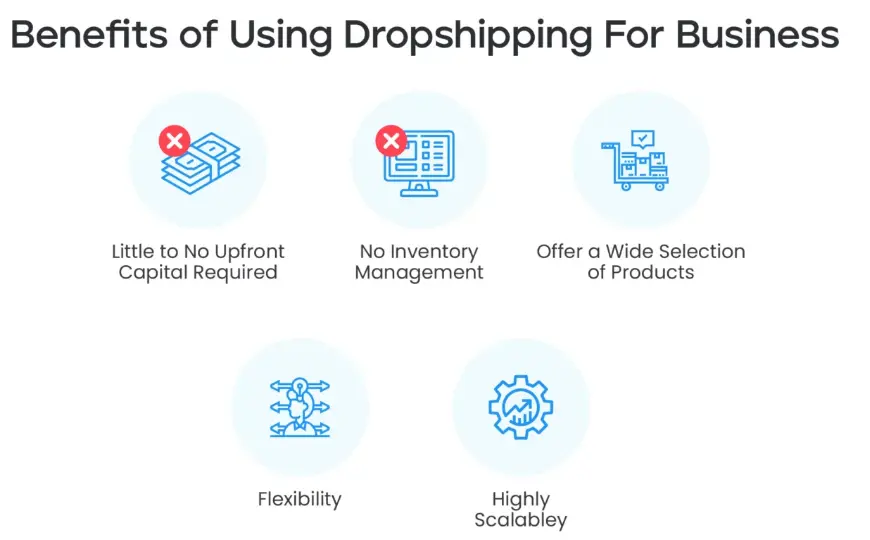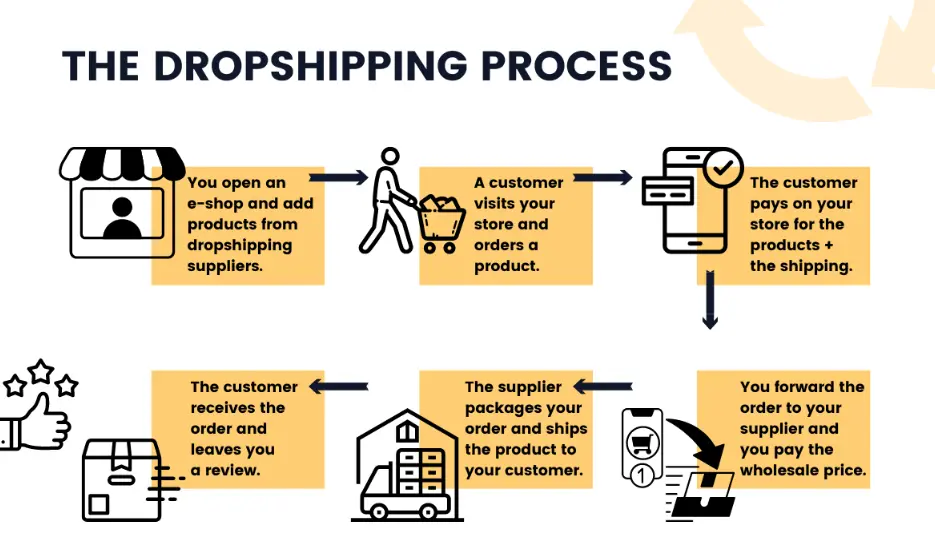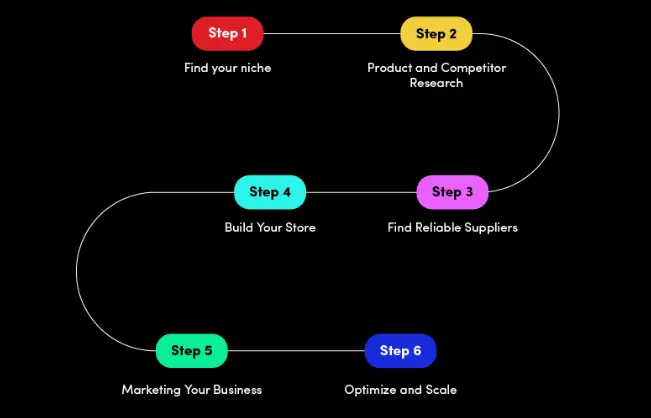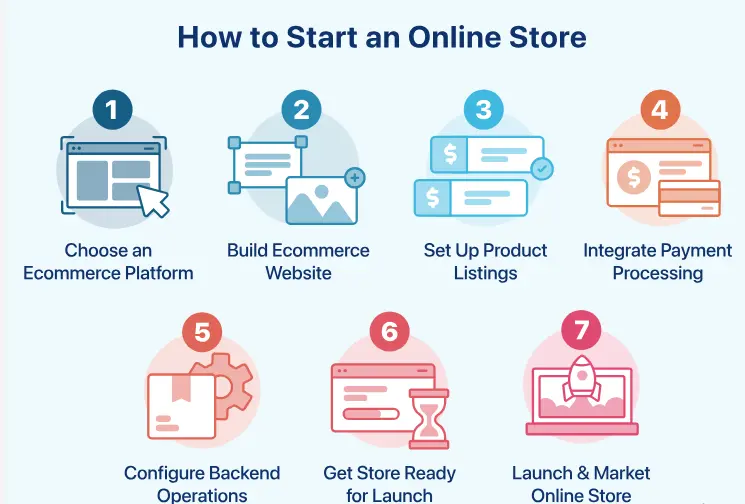What is Dropshipping?
Dropshipping meaning a retail fulfillment method where an online store doesn't keep the products it sells in stock. Instead, the store purchases items from a third-party supplier and ships them directly to the customer.
Benefits of Dropshipping
Dropshipping offers numerous advantages that make it an attractive business model for aspiring entrepreneurs. By leveraging third-party suppliers, business owners can reduce their financial risks and operational complexities.
Low Startup Costs
Starting a dropshipping meaning business can be successful with minimal initial investment. Entrepreneurs don't need to buy inventory upfront, saving money. This means you can allocate more resources to marketing and customer acquisition.
No Need for Inventory Storage
With dropshipping, there's no need to rent or manage warehouse space. Suppliers handle storage, reducing overhead costs and logistical headaches. This allows you to focus on growing your business rather than managing stock.

Flexibility and Scalability
Dropshipping meaning businesses can be run from anywhere with an internet connection. This flexibility allows for easy scaling. You can quickly expand your product range or enter new markets without significant adjustments to your operations.
Wide Range of Products
Since you don't need to store products, you can offer a diverse selection. This means you can test different items and niches to see what sells best without the risk of unsold inventory.
How Dropshipping Works
Understanding how dropshipping works is essential for anyone considering this business model. It involves a collaborative relationship between the dropshipper, suppliers, and customers.

The Role of the Dropshipper
The dropshipper is the middleman who operates the online store. They focus on marketing, customer service, and managing the website. For instance, an individual starts an online store selling gadgets. They don't stock the items but showcase products from various suppliers. When customers place orders, the dropshipper handles the transactions and ensures customer satisfaction.
Supplier Relationships
Building strong relationships with suppliers is crucial. Suppliers handle product inventory, packaging, and shipping. For example, a dropshipper selling fitness equipment collaborates with manufacturers who provide high-quality products. By maintaining good communication and trust, the dropshipper ensures timely deliveries and consistent product quality, enhancing the store's reputation.
Order Fulfillment Process
The order fulfillment process in dropshipping involves several steps:
Customer Places an Order: A customer orders a product from the online store.
Order is Sent to Supplier: The dropshipper forwards the order details to the supplier.
Supplier Ships the Product: The supplier packages and ships the product directly to the customer.
Getting Started with Dropshipping
Starting a dropshipping business involves careful planning and strategic decisions. By choosing the right niche, conducting market research, selecting reliable suppliers, and setting up an effective online store, you can lay a strong foundation for success.

Choosing a Niche
First step is to begin with choosing a niche:
Identify Your Interests: Choose a niche that you are passionate about. This keeps you motivated and engaged.
Evaluate Market Demand: Ensure there's a healthy demand for products in your chosen niche. Use tools like Google Trends to assess interest levels.
Consider Competition: Select a niche with manageable competition. Highly saturated markets can be challenging for new dropshippers.
Market Research
Next is crucial step of market research by:
Analyze Customer Needs: Understand your target audience and their preferences. Conduct surveys or engage in forums to gather insights.
Study Competitors: Look at successful dropshipping stores in your niche. Note their pricing, marketing strategies, and customer feedback.
Identify Gaps: Find opportunities where you can offer something unique or better than existing products.
Selecting a Supplier
To select a supplier, follow:
Check Supplier Reliability: Partner with suppliers known for their reliability and quality. Read reviews and ask for references.
Test Products: Order samples to ensure product quality and shipping times meet your standards.
Negotiate Terms: Discuss payment terms, return policies, and communication protocols to establish a clear and professional relationship.
Setting Up an Online Store
Lastly, set up a online store following:

Choose an E-commerce Platform: Platforms like Shopify, WooCommerce, or BigCommerce are popular for dropshipping. They offer user-friendly interfaces and essential integrations.
Design Your Store: Create a visually appealing and easy-to-navigate website. Use high-quality images and detailed product descriptions.
Implement SEO and Marketing: Optimize your site for search engines. Use social media, email marketing, and paid ads to attract traffic and drive sales.
Frequently Asked Questions (FAQs)
What is dropshipping?
Dropshipping is a retail fulfillment method where an online store sells products without keeping inventory. Instead, it purchases items from a supplier who ships them directly to the customer.
How do I start a dropshipping business?
To start dropshipping meaning, choose a niche, conduct market research, select reliable suppliers, and set up an online store on platforms like Shopify or WooCommerce.
Is dropshipping profitable?
Yes, dropshipping can be profitable with low startup costs, minimal overhead, and the potential for high margins if you choose the right niche and effectively market your products.
What are the benefits of dropshipping?
Benefits include low startup costs, no need for inventory storage, flexibility to work from anywhere, and the ability to offer a wide range of products.
How do I find suppliers for dropshipping?
Use online directories like AliExpress, Oberlo, or SaleHoo. Verify supplier reliability through reviews, references, and by ordering product samples.
